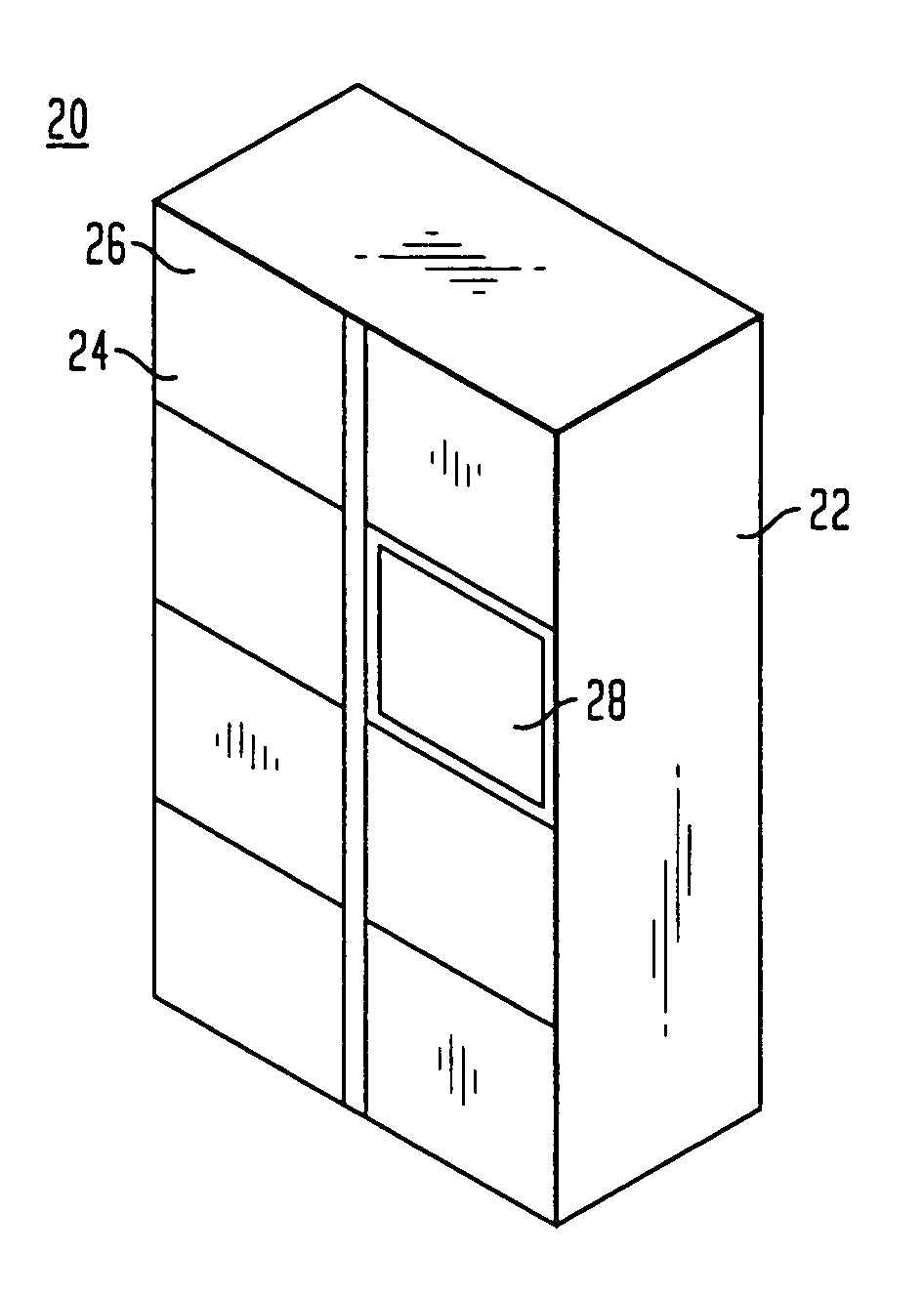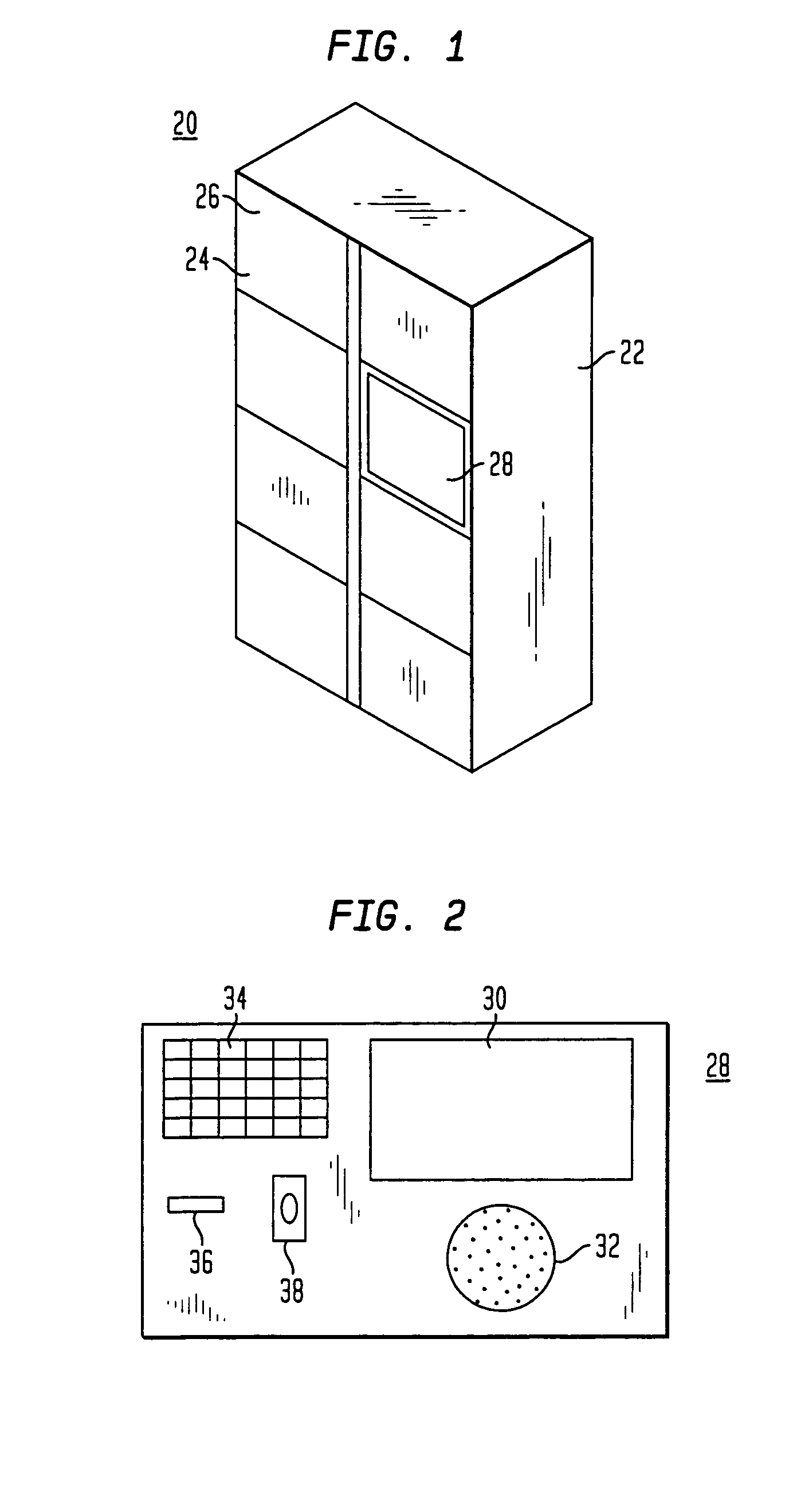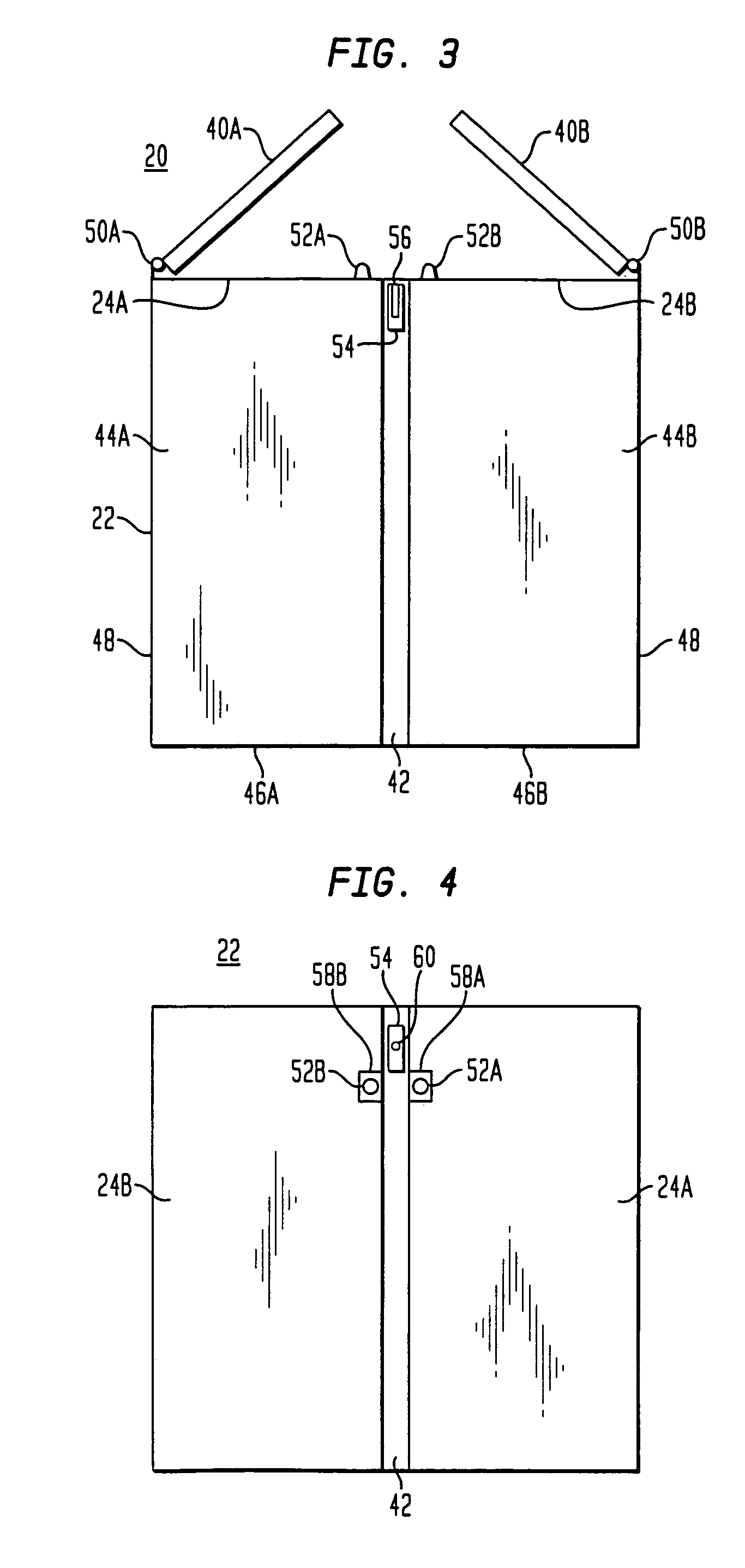Intelligent locking system
a locking system and intelligent technology, applied in the field of locking systems, can solve the problems of maintenance and security problems, keys must be used to operate, and the vendor/owner cannot always account for the correct amount of cash, so as to avoid time-wasting and demeaning effects
- Summary
- Abstract
- Description
- Claims
- Application Information
AI Technical Summary
Benefits of technology
Problems solved by technology
Method used
Image
Examples
Embodiment Construction
[0034]FIG. 1 shows a perspective view of an intelligent locker system, in accordance with certain preferred embodiments of the present invention. The intelligent locker system 20 includes a cabinet 22 having a plurality of locker openings 24. Each opening 24 is covered by a door 26 hingedly connected to the cabinet. The intelligent locker system also includes a central controller, commonly referred to by the assignee as a Customer Service Station (CSS) 28. In the particular embodiment shown in FIG. 1, the intelligent locker system includes two vertically-extending columns of locker openings, each column having a series of vertically aligned openings. In the particular embodiment shown, the locker system has a first column of four locker openings, and a second column of three locker openings and one Customer Service Station. The capacity of the locker system may be increased by adding another locker cabinet 22 to the left or right of that shown in FIG. 1. Thus, additional locker cabi...
PUM
 Login to View More
Login to View More Abstract
Description
Claims
Application Information
 Login to View More
Login to View More - R&D
- Intellectual Property
- Life Sciences
- Materials
- Tech Scout
- Unparalleled Data Quality
- Higher Quality Content
- 60% Fewer Hallucinations
Browse by: Latest US Patents, China's latest patents, Technical Efficacy Thesaurus, Application Domain, Technology Topic, Popular Technical Reports.
© 2025 PatSnap. All rights reserved.Legal|Privacy policy|Modern Slavery Act Transparency Statement|Sitemap|About US| Contact US: help@patsnap.com



